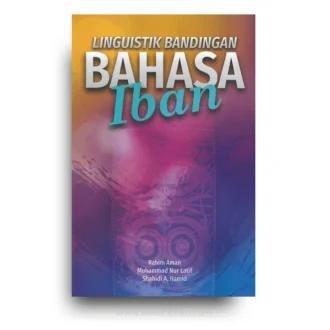The Rising Moon: Political Change in Sarawak 1959-1972 was the first in-depth study of the beginnings of modern politics in Sarawak between 1959 and 1972. The plural society of that state offered a stark contrast to that elsewhere in Malaysia, for in Sarawak viable political parties spanned ethnic divisions, a development that had not then taken place in the other parts of the nation.
The rising moon is both a symbol and a reality. Though a symbol of Islam, its appeal and significance goes beyond a single faith. The reality of the rising moon lies in its constancy. Politics involves the constancy of land and people in the same way as it involves the progression of time signified by the moon’s place in the eternal cycle of life.
Side-by-side with the development of politics came the integration of Sarawak within Malaysia, and all the attendant tensions that followed from the merging of this its largest state within an expanded federation. The resultant pattern of politics was dynamic, and throughout this phase remained quite tentative due in large part to Indonesian confrontation and the armed activities of the local communist organisation. Amongst the states of Malaysia, Sarawak is unique, as all groups are in a minority, whether they be defined by ethnicity, religion or mother tongue. That necessitated political compromise spanning ethnic, religious and cultural divisions.
The politics of Sarawak have maintained a complexity unique to that state and not shared by the other component states of Malaysia. Ever since the introduction of political parties, each major ethnic community has been internally divided, a fact that has undermined racial solidarity and so promoted a fluidity in the political process within which the political groupings have manoeuvred in shifting patterns. This in turn has led to the formation of viable political parties whose support spans ethnic divisions. Though race and ethnic group determine the predominant lines of cleavage, the politics of Sarawak display a more variegated and flexible pattern than is the case elsewhere in Malaysia where the influence of all-pervasive ethnic identities is only too apparent.
The Rising Moon: Political Change in Sarawak 1959-1972 focuses upon the incorporation of Sarawak into the Malaysian political system, one that was designed to mediate the more rigid ethnic divisions apparent in West Malaysia. The process of integrating Sarawak into a wider pan-Malaysian political system involves the accentuation of local ethnic cleavages. This entails a focus upon ethnicity to the exclusion of other cross-cutting divisions. The more pluralistic Sarawak system has been under pressure to change in that direction since the beginning of the era of party politics. The pressure came first from the British and latterly from the way in which federation politics have structured divisions inside Sarawak itself. In both cases pressure has been exerted to limit recruitment by multiracial parties to those of one race.
The dynamism and fluidity of the state’s politics can be attributed in part to the specific nature of the ethnic complex. Sarawak has three major groups, not one of which approaches a majority of the population. This tripartite division stands in marked contrast to the predominance of a Malay versus non-Malay dichotomy in West Malaysia. and has produced a situation in which each group has found it necessary to manoeuvre to gain the support of elements outside its own community.











Reviews
There are no reviews yet